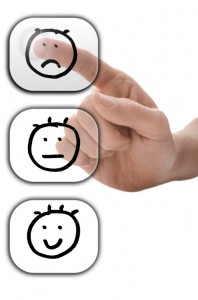Editor’s note: Tanya Krim is president of TKInsights LLC, a Teaneck, N.J., qualitative research firm.
 I’ve lived in several different countries and visited others in the month of December. And whether it’s Frankfurt, Paris, London, New York or Strasbourg, December is usually synonymous with illuminated streets and stores, bustling sidewalks, shopping bag-holding consumers, red ribbons, holly and dark green wreaths.
I’ve lived in several different countries and visited others in the month of December. And whether it’s Frankfurt, Paris, London, New York or Strasbourg, December is usually synonymous with illuminated streets and stores, bustling sidewalks, shopping bag-holding consumers, red ribbons, holly and dark green wreaths.
There is an excitement in the air, a palpable “This place has got it going on” feeling. Something pleasant is hovering – just within hand’s reach. Not here yet but on the way. A bit like when you are waiting at the airport for a loved one to step out into the arrival lounge so you can hug him/her for the first time in a long time. It’s saying goodbye – at least temporarily – to the harsh realities of the everyday and putting all the other stuff on hold. It’s vacation time. Fun with friends and loved ones, special food, gifts. It’s the promise of love, physical and emotional warmth, happiness and well-being.
Retailers feel happy and excited too as they know, at least in the U.S, that November and December generate 40 percent of their annual sales.
So what happens on January 2nd or a few days later when everyone returns to work? There appears to be a shift in the national mood. It’s more than just post-holiday blues. It seems to run deeper than that. It’s the beginning of a new year, which, on the one hand, may symbolize freshness, rejuvenation, new opportunities and open doors. On the other hand, it may dial up feelings of anxiety, concern, self-questioning and doubt.
The twinkling Christmas lights in the streets and stores get taken down. The homes and streets look lonelier, stripped of their personality and brightness. And dismal thoughts sometimes accompany the darkening of the city. It’s a time for deeper reflection, which can lead shoppers to give into their worry and uncertainty about the coming year’s events.
Am I going to have as good a year as last year at work and at home? What am I going to know this time next year which I don’t know now? Will it be good or bad?
Which retailers are going to survive and which are not?
Will my favorite brands and products make it through the year or might they lose their allure and popularity with consumers?
People I spoke to in the metro New York area indicated that the pre-Christmas period is stressful but also exciting and heartwarming. They simultaneously admitted that their emotions post-January 1st plummet for different reasons. Some have buyer’s regret as they realize that the pre-Christmas purchases were not as good as those available post-Christmas. Others are sad that they have to return to their “real” lives and responsibilities after a season of partying and time off. And others are also fearful about their finances and life in the coming year – the prospect of starting over and making fresh mistakes, possibly worse than those in the preceding year.
Against this backdrop, with consumers struggling to shake off the post-holiday blues, smart marketers might use these insights to forge a tighter bond with them and drive sales. Some suggestions include trying to:
“Happy it up” visually in-store in January and February so that consumers feel a little brighter when they walk in. Perhaps create a graffiti wall/glass door where customers can write down their hopes and fears for the new year or wishes that the retailer should help effect (“I wish you would sell X, Y, Z …”)
Create attention-getting events that help inject consumers with more enthusiasm and excitement: a free makeover event to help women focus on creating a “New Year, New You” look or a “pay it forward” day that emulates what Starbucks customers in Newington, Conn., did 1,468 times on Christmas Day, when they purchased a drink for the customer behind them in the drive-thru line.
Offer unexpected in-store surprises in all shapes and sizes to perk the shoppers up: shopper #46 in aisle six gets a $25 gift card; free, healthy snacks (e.g., 3 p.m. apple snacks to help customers feel like they are atoning for their food indulgences over the holiday and on track with their post-holiday diet effort!); special offers on items/services that can help customers throw themselves full-force into a little “project.”
Launch unusual (yet meaningful) game/contests, such as creating a “Where my head is at in January” collage, to allow them to get in touch with their feelings and show them that the retailer cares about and recognizes how they are feeling. Offer prizes such as a gym membership, which can help boost consumers’ moods. Or give them a chance to win a special experience, such as was offered by the U.K.’s Daily Telegraph, which invited readers to participate in a prize draw for a chance to win a day out for two at a Guide Dogs training center where they would learn how an untrained puppy ends up as a guide dog.
Organize some fun community activities to lift customers’ spirits and allow them to meet their neighbors by helping a local charitable organization. Paint a newly-constructed house for Habitat for Humanity, assemble meals at a food bank or hold a coat drive. These types of social activities are perfect for chasing away the post-holiday blues that come from suddenly moving from family/people time to “alone” time and can revive the sense of excitement that permeated the weeks leading up to the holiday season. And the charitable aspect lets participants feel good about who they are or are trying to be in the new year.
